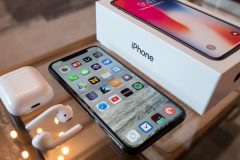We all love IoT, so what about protocols?
Network protocols, for those not in the know, are set of rules for communication between network devices, compression and data packing. Thanks to these rules, devices identify and connect to each other and you can, for example, turn on the music with your phone. Cool, isn’t it?
There’s a wide choice of protocols for the Internet of Things, each one of which takes care of a different aspect. Among the many in use in the IoT domain, some deal with the infrastructure (6LowPAN, IPv4/IPv6, RPL), some with data (MQTT, CoAP, AMQP, Websocket, Node), others with communications, like Bluetooth.
There are actually several other kind of protocols, but today one of the most interesting is definitely Bluetooth 5. Let’s take a look at it.
But first, a little bit of perspective.
Bluetooth
In the context of IoT protocols, if we don’t take Wi-Fi into account, Bluetooth is probably the most universally accepted one. Most consumer devices have some sort of Bluetooth-enabled interaction, and the market spawns new ones every day – just think about all those smart trackers on Kickstarter, iPhone’s AirPods and the brand-new Google’s earbuds (which, if you miss the news, translate 40 languages in real-time).
The poster child of IoT network protocols, Bluetooth works in the 2.4 GHz ISM band and uses frequency hopping. It has a data rate up to 3 Mbps and a maximum range of 100 m. Many expect it to be the backbone of wearables’ and M2M network communication.

Bluetooth Smart
Bluetooth Smart, formerly known as Bluetooth Low Energy or BLE, is Bluetooth’s younger brother. BLE works in the 2.4 GHz ISM band. But there are differences: unlike Bluetooth, Bluetooth Low Energy remains in sleep mode until a connection is initiated. The connection takes only a few mS, unlike Bluetooth, which takes about 100 mS. In fact, data rate are high at 1 Mb/s, and that’s why the connections are so short.
Compared to the classic version, Bluetooth Smart works at the same range of 100 m but is more energy-efficient. Unlike Bluetooth this protocol, originally introduced under the name Wibree by Nokia in 2006, is not designed for actual file transfer but to send small data packages instead. According to Bluetooth Special Interest Group (SIG), the entity supervising the development of Bluetooth standards and its licensing and trademarks, Bluetooth Smart will be supported by more than 90% percent of smartphones by 2018. Today is natively supported by all mobile and desktop operating systems.

Bluetooth 5
Officially announced to great fanfare during a media event in London in June 2016, Bluetooth 5 is designed for the Internet of Things. Like the classic version, it covers the same range but is even more energy-efficient. Among the devices currently supporting the technology we count Samsung Galaxy S8, iPhone 8, iPhone 8 Plus and iPhone X.
Bluetooth 5 allows more tweaks for Bluetooth Low Energy: double speed (2 Mbit/s burst) but lower range, or four times the range with lower data rate and eight times the data broadcasting capacity of transmission. For example, 251 bytes worth of data may be sent in 2120 microseconds with the classic Bluetooth, while you only need 1060 with Bluetooth 5. The gap between packets isn’t shorter though – but if we do the math, Bluetooth 5 is more or less 1.7 times faster than BLE 4.2. Anyway, the option for long range is probably the most interesting one: thanks to this and to Forward Error Correction (FEC), an industry empowered with sensors and gateways can energy-efficiently transmit without Wi-Fi modules nor Wi-Fi coverage nor mains power.
All things considered, Bluetooth 5 is one of the most prominent candidate to enable M2M communication in IoT at scale. Bluetooth is already everywhere, and if Bluetooth 5 keeps up with what it promises, odds are that Bluetooth 5 may follow the same destiny. From a developer’s perspective, it’s cheap to implement stuff – no need for dongles, gateways or external peripherals that the consumer will have to add to make things work. From mesh networks to beacons, from smart factories to smart cities, there’s a number of use cases that seem just perfect for Bluetooth 5.
We’ll just have to wait and see.





















